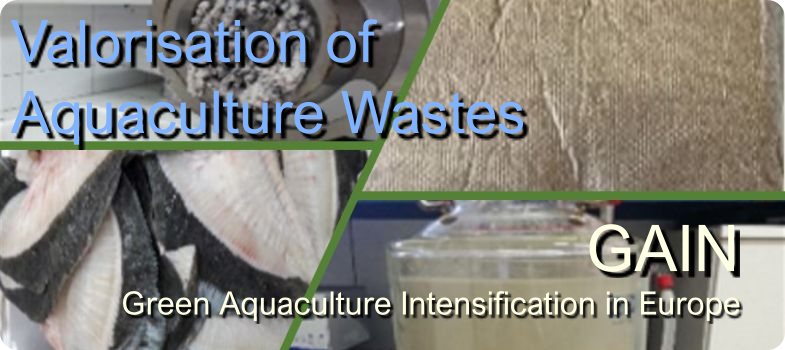Credits and acknowledgements (Section 3.2)
Authorship
The section on the biotechnological conversion of aquaculture by-products was developed by Xosé Antón Vázquez Álvarez, Group of Recycling and Valorisation of Waste Materials (REVAL), IIM-CSICVideo
The video "Application
of marine peptones from aquaculture wastes on the growth of bacteria" was filmed
and post-produced by Rafael Luis Méndez Peña (RAFAELLUISMENDEZPEÑA, audiovisual
company, http://rafaelmendezp.com/) under the direction of Xosé Antón Vázquez Álvarez,
Group of Recycling and Valorisation of Waste Materials (REVAL), IIM-CSIC. It is licensed under Creative Commons 4.0 cc-by-nc-nd.
The video
explains the different step applied for the production of marine peptones and
their use as source of organic nitrogen for the growth of lactic acid bacteria.
It was filmed at IIM-CSIC. Staff from REVAL (IIM-CSIC) appearing in the video are indicated in the final credits.
Figures
Figure 1. Flowchart defined for the production of marine peptones useful as
organic nitrogen source for the growth of lactic acid bacteria or probiotic
marine bacteria. This was developed by Xosé Antón Vázquez Álvarez, Group of Recycling and
Valorisation of Waste Materials (REVAL), IIM-CSIC. It is licensed under
Creative Commons 4.0 cc-by-nc-sa.
Figure 2. Top: Composition of MRS commercial medium and marine peptone-MRS medium.
Bottom-left: Kinetics of the LAB Lactobacillus
plantarum fermentation showing productions of biomass (X), lactic acid (L),
acetic acid (A) and viable cells (G) on peptones from hydrolysis heads and
MRS-control. Bottom-right: Comparison of biomass production costs for L. plantarum in the alternative media
formulated with marine peptones and in the commercial MRS medium. The figure shows the composition
of commercial MRS medium and alternative medium based on marine peptones
together with lactic acid bacterium growth on those media. This was developed by Xosé Antón Vázquez Álvarez, Group of Recycling and
Valorisation of Waste Materials (REVAL), IIM-CSIC. It is licensed under
Creative Commons 4.0 cc-by-nc-sa.
Figure 3. Top: Composition of Marine commercial medium and marine peptone-Marine
medium (Marine-REVAL-IIM). Bottom-left: Kinetics of the PMB Phaeobacter sp. fermentation showing
productions of biomass (X) and viable cells (G) on peptones from hydrolysis
heads and MRS-control. Bottom-right: Comparison of biomass production costs for
Phaeobacter sp. in the alternative
media formulated with marine peptones and in the commercial Marine medium. This figure shows the composition
of commercial Marine medium and alternative medium based on marine peptones
together with probiotic marine bacterium growth on those media. This was developed by Xosé Antón Vázquez Álvarez, Group of Recycling and
Valorisation of Waste Materials (REVAL), IIM-CSIC. It is licensed under
Creative Commons 4.0 cc-by-nc-sa.
